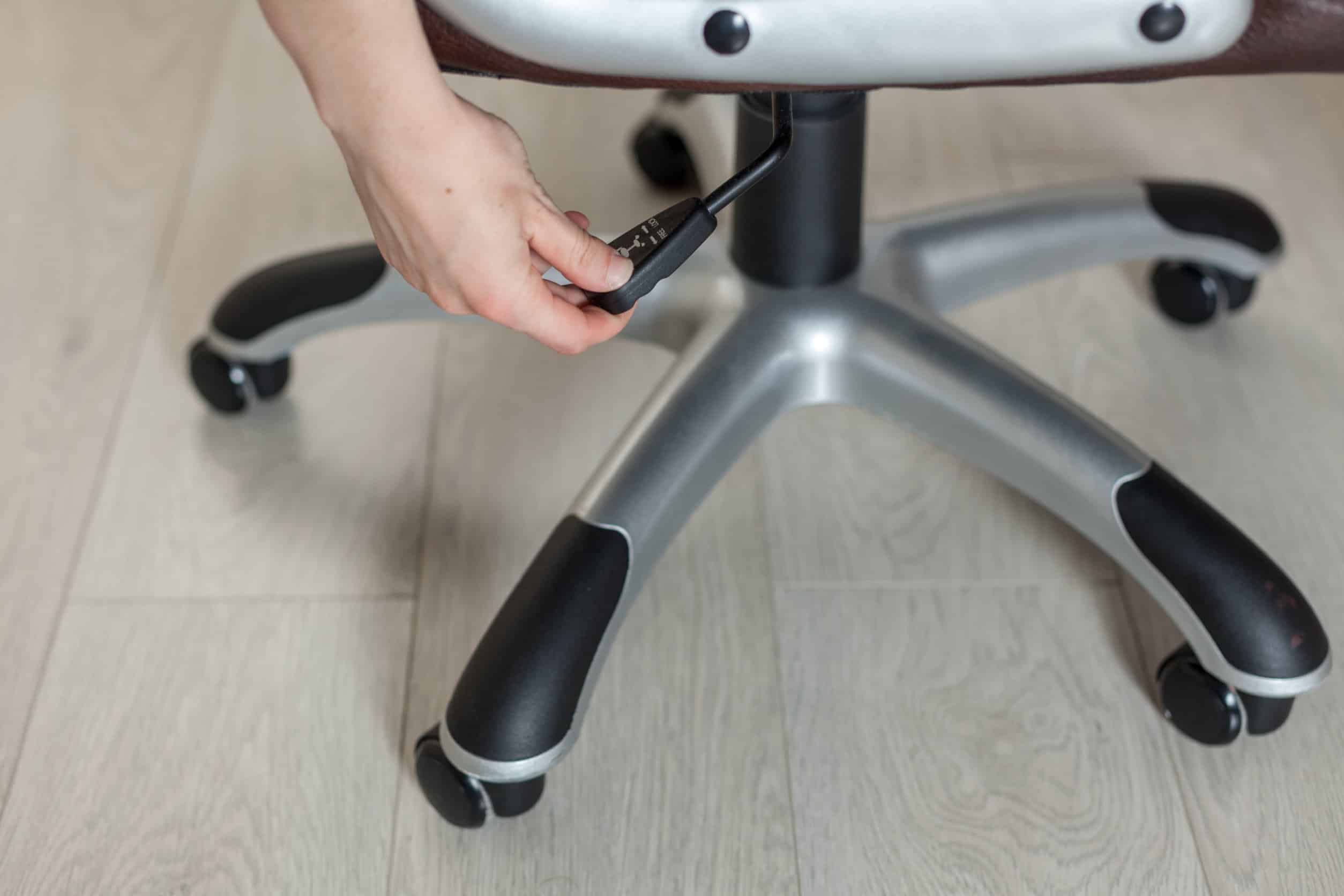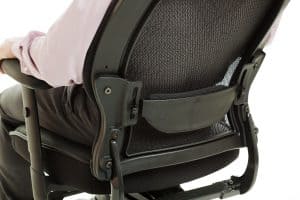How high should your chair be given the desk you’re using? Or more precisely, what is the right ergonomic chair-desk set up in the office?
You may be imagining that there is a simple, single-word answer to this question, but that’s not the case. The proper height of your office chair depends on two factors: the work you do and how tall you are.
Each person is different, as well as every work environment, so the correct height of your chair for you will be within a spectrum of values.

How High Should Office Chair Be?
If you usually sit at the desk at your job and work on a computer device, then your chair height needs to align with your desk height, which needs to align with your own height.
Here’s a robust table revealing how high the chair should be given the desk and your own height.
| Your Height | Desk Height | Chair Height |
| 4’9” – 5’2” | 1’8” – 2’1” | 1’2” – 1’4” |
| 5’3” – 5’6” | 2’1” – 2’5” | 1’3” – 1’6” |
| 5’9” – 6’2” | 2’3”- 2’6” | 1’5” – 1’7” |
| 6’3” – 6’6” | 2’4” – 2’8” | 1’6” – 1’8” |
Besides the chair and desk adjustment, it is also important that you adjust your monitor so that the upper border of the screen is at the same height as your eyes. This is achieved by placing the desk at the proper height and then estimating the monitor distance necessary to match your eye height.
If your office chair can’t reach the appropriate height to match your desk and your own height, check out some of these creative techniques for making your chair taller.
How to Set Up the Chair for Optimal Office Work?
Here’s a step-by-step guide on how to set up your chair at optimal height and comfort to avoid any possible injuries or painful experiences.
First, move the chair away from your office desk. Then while it’s away from the desk, sit in it comfortably, and place your back against the backrest.
Seat Depth
Now, place your fingers within the inner part of your knees. The gap between the inner knee and the seat’s front edge should be no more than 3 fingers in width. If it’s wider, you should increase the seat depth. How? By pulling a slider to bring the seat forward. If the gap is less than 3 fingers wide, push your seat backward to reduce seat depth.
Chair Height
Now, adjust the height of your chair. If both your feet are on the floor and your knees are bent at 90 degrees (a.k.a, your knees are positioned a bit lower than your hips), you are sitting in a good position. It is important that your knees are below your hips level because you reduce the pelvic rotation and lumbar pressure. In other words, you are reducing the odds of experiencing back pain.
Armrests Position
The next thing to adjust is the armrests. Set them up so your forearms lie comfortably on the pads while your elbows are bent at 90 degrees. The shoulders should be relaxed and comfortable when set on the armrests. You’re doing it wrong if you feel any shoulder stiffness or tension.
If possible, you can also adjust the width of the armrests to fit your body shape. Ideally, the upper part of your arm should be vertically positioned, parallel to your body, and not moving too far away from it. As for the arm pads, rotate them until you can rest the forearms comfortably over the whole pad.
Swivel Adjustment
The swivel mechanism of the chair should be adjusted in a way that suits your body weight. How do you know that this has been achieved? When you are sitting in the chair in a relaxed position, and when you rest your recline, the tension of the spring should hold your weight. If this is not the case, you can adjust the swivel tension until your reach the optimal level.
Lumbar Support
The height of the lumbar support on the backrest is extremely important. Adjust it in a way that fits the lumbar part of your back. The spine should be in a natural position, with the lumbar support helping release any muscle and tendon tension.
Find out more about how to set up your chair’s lumbar support and where lumbar support should be precisely on our blog.
If your chair doesn’t come with lumbar support, consider buying one. There are models that you can simply put on the chair and “sit into”, those that come as a set containing a seat cushion and attachment for the back, full-back attachments with special curvature in the lumbar part, and backrest attachments that only cover the lumbar curve.
Headrest
Last by not least is the headrest. The headrest should be placed so your shoulders are pushed to the back and your chest up. This improves your breathing. Many chairs don’t come with a headrest, and we strongly recommend installing one for the best sitting experience. Like lumbar support, these too usually come as universal attachments that you can place on any ergonomic office chair.
Final Word
Setting proper office chair height is very important for your health, work productivity, and overall experience in your office chair. Sitting long hours in an office chair of inappropriate height can result in putting unnecessary pressure on your joints and spine. Over several months or years, this can result in an injury or chronic pain.
To avoid such a negative outcome, set up your chair to an appropriate height, accounting for your desk height and your own height.
This is not a universal number, but a certain ratio between your height, the desk, and the chair allows you to preserve the healthiest possible sitting position, which is a straight but relaxed back, knees slightly below the hip level, bent by 90 degrees. Happy sitting!





